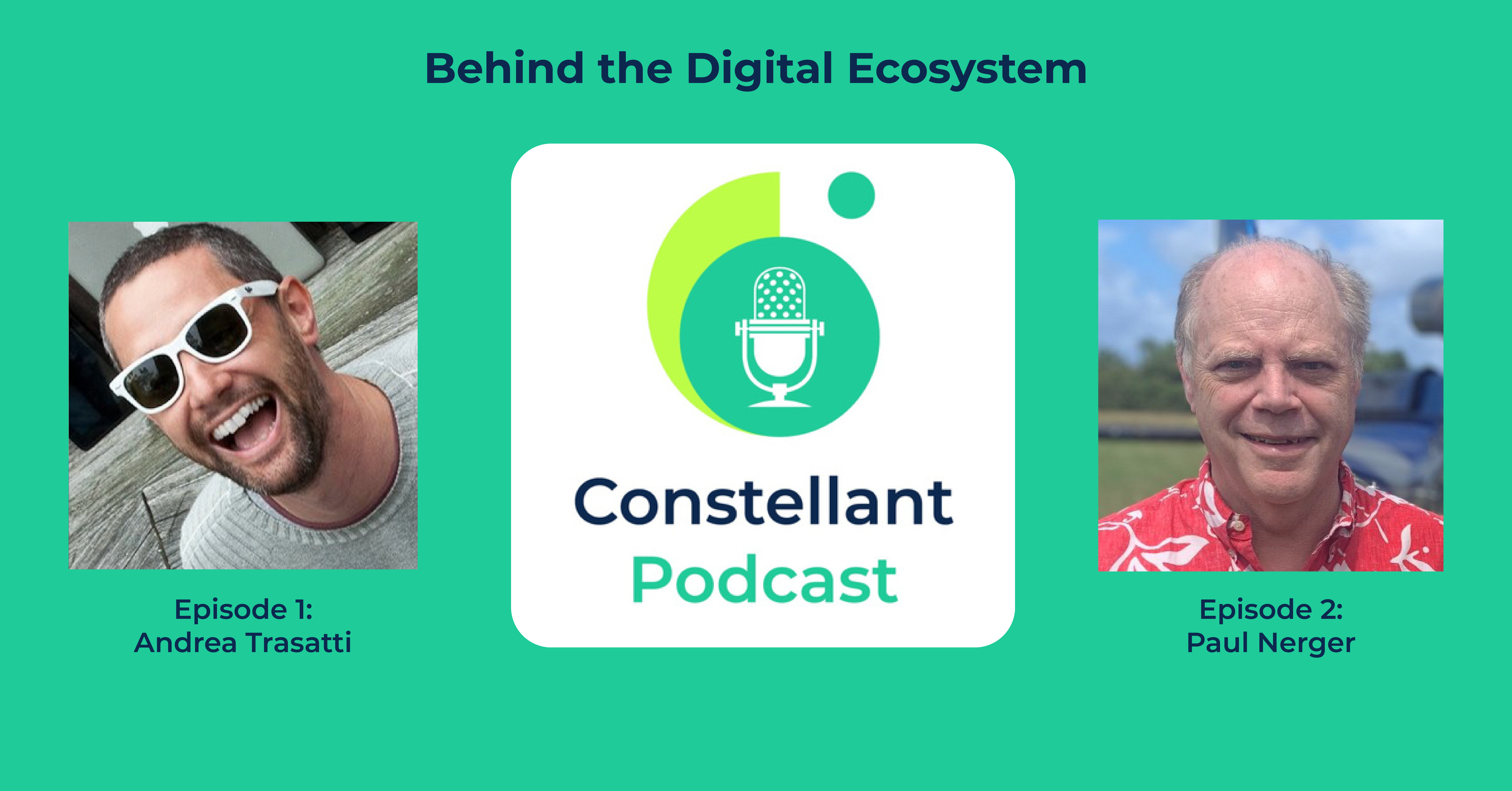The only ecosystem blog you'll ever need
The latest news, interviews and more from the
ecosystem management-as-a-service people

Highlights from “Behind the Digital Ecosystem” Podcast Series: Episodes 1 & 2
February 2, 2021
In our new podcast series, Bhavesh Patel of Constellant interviews guests to discuss digital ecosystems. So far, topics have included how to effectively build, manage, and scale ecosystems, specifically those with developer and partner programs.
In case you aren’t big on listening to podcasts, we’ve broken down some of the key insights from the first two episodes, interviews with Andrea Trasatti and Paul Nerger, for you to digest.
- Triggers for building your ecosystem can come from anywhere, such as regulatory requirements.
In this first episode, we get advice from Andrea Trasatti, Director for Developer Ecosystem at BancoSantander. After a background in open source projects and various companies like Nokia, Trasatti then got involved in the developer ecosystem world.
Trasatti explains that in Europe, there has been a push for banks to open on a set of certain APIs. The impetus to create a developer ecosystem for Banco Santander initially came from the regulators, but the bank wanted to find a way to keep both B2Bs and regular consumers in mind when creating new systems. They wanted to find a way to create API systems for everybody.
As the bank introduced more and more automation and real-time services, they were able to dismantle outdated batch services. Then, operations could happen at a faster pace, a pace not possible with previous technologies.
- Advice for smaller companies creating developer ecosystems: be patient and resilient.
Trasatti’s number one piece of advice is to be patient and resilient when creating a digital ecosystem. And that goes for all different types of companies. Digital transformation is a process of evolution.
Trasatti also recommends having a vision and then validating it with your company. Making sure that you and your company are on the same page when it comes to the future of your digital ecosystem is essential to developing trust and understanding. Trasatti worked to develop a 2-3 year plan with Banco Santander to ensure that everyone understood the whole journey of what the developer ecosystem would bring.
- When building an ecosystem, team members should work together towards the goal of great user experience.
Trasatti explains the breakdown of Santander’s developer ecosystem team. There are people working on design, a few engineers working on the back end, and a few on the front end. Together, the teams collaborate to ensure that there is an optimized user experience.
Trasatti recommends creating a cadence to getting things done. He explains how developers should have systems in place to be able to communicate with other developers quickly. With all teams functioning together, the result is a great user experience.
- You should DX before you DIY.
In the second episode of the podcast series, Bhavesh Patel has a discussion with Paul Nerger, VP of Digital Exchange at Blue Prism, on business strategies in the tech industry. Nerger has been in the tech industry his entire professional career. At Blue Prism, they coined the term Robotic Process Automation, which is a process that manages digital workforces.
Nerger explains that there is a saying at Blue Prism, "DX before you DIY". Blue Prism is focused on adding value to their customer. Through DX, you should come to the digital exchange, find out if the component you need is there and save yourself the effort of finding it yourself. It can be the difference of 20 minutes versus 20 hours. This is how digital ecosystems can add immense value to your current and future customers.
- Impacts of digital ecosystems can go beyond corporate: Blue Prism leveraged theirs to help hospitals handle COVID-19.
Nerger explains the DX Private service offered through Blue Prism which allows users to create private assets, perfect for the confidential nature of patient files. Blue Prism used this program so that the National Health Services in the UK could upload assets that were only visible to hospitals within that network. The DX system has also allowed many other users to accelerate the use of intelligence automations, especially in complex organizations.
- Experts in digital ecosystems can help rapidly implement customizations that support exponential growth.
As Blue Prism grows bigger and bigger, the usability of the program starts morphing. They need help adjusting and maintaining digital exchanges. Nerger describes how Constellant was able to help the company change the user interface to allow scalability. Nerger hopes to continue the partnership with Constellant in order to keep evolving.
Interested in hearing more? Check out Behind the Digital Ecosystem podcast series today.

